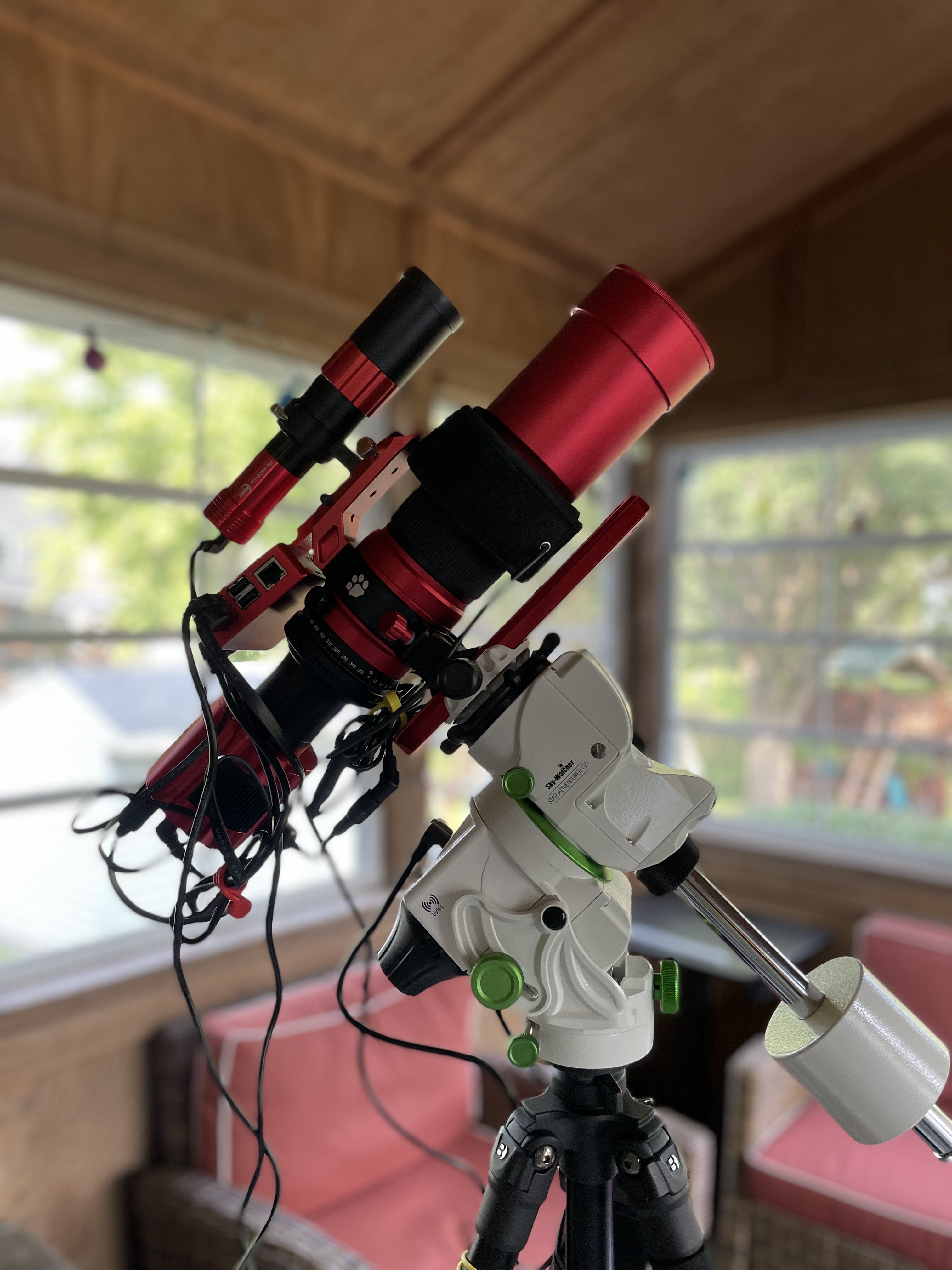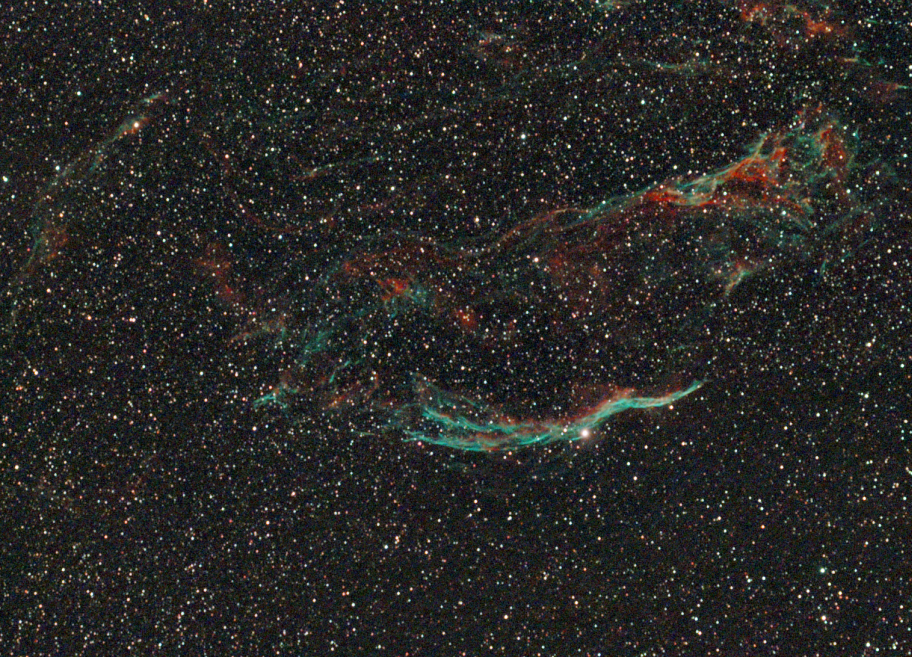About

Last week I finally got the Sky-Watcher Star Adventurer GTi that had been on back-order since last spring when I ordered it. I was excited to give it a try. I got everything hooked up and, after some failed attempts, I was able to get my ASIAir connected to everything. I took it out that night, got things focused, and then clouds rolled in.
So I’ve had everything sitting inside, just waiting for a clear night for about a week. After a very cloudy day, it suddenly got clear just as the sun was setting. OK, here we go!
Backyard
It is still technically summer for a couple days, so the sun is setting later. That means I couldn’t really start the process until 8:15 or so, when it was dark enough to see some stars. This isn’t that late, I know, but I didn’t want to be up all night. In a couple months it will be dark by 5:00pm, and I’ll be dreaming of these longer warm days. On the plus side, in winter I’ll have a larger view of the sky when all the stupid leaves fall off the trees.
I got the mount aligned (after remembering to rotate my telescope 90°), my telescope focused, and then the moment of truth. Will the go-to feature work? I found the Western Veil Nebula in the ASIAir and clicked “go.” The mount started moving like magic and it aimed where it thought the nebular would be. Then it had some issues plate solving and figuring out. It turns out I had no idea what the focal length was for my camera, and without that it does not know how to know where it is pointing. More on that later.
Now I was inside watching TV with an iPad in my lap controlling everything remotely. It is going to make winter so much better not having to freeze my… fingers off.
It turns out the mount was very close to the Veil Nebula, but it wasn’t centered. From inside I was able to slew to get it more centered. Then I could set up a plan to take some actual pictures. I only took 9 3-minute frames as a test.
Focal length
I tried a bunch of different focal lengths to help with plate solving. Every time I got an error message that, despite seeing 1000s of stars, the software could not do the plate solving. It all seemed to be due to incorrect focal length. I tried 55 (sensor to the scope lens), 305 (250 for the telescope + 55 camera), 250, 59, and more. I even tried 0, which is what it recommends when you don’t know the focal length and it is supposed to compute it for you, but that didn’t work. It turns out I don’t really understand focal length.
Update: eventually I figured out about Calculating Focal Length From an Image. I’ll have to test that out next time. I think the problem was with my gain value.
See Veil Nebula September 25 2022.
Processing
Since I only had 9 light frames, I did not want spend a bunch of time on processing. I basically just did the photometric color calibration in Siril (which tries to match your colors to known colors of the same deep sky object), and some stretching. When I get some calibration frames and longer exposures, I’ll work a bit harder on it.
Output
